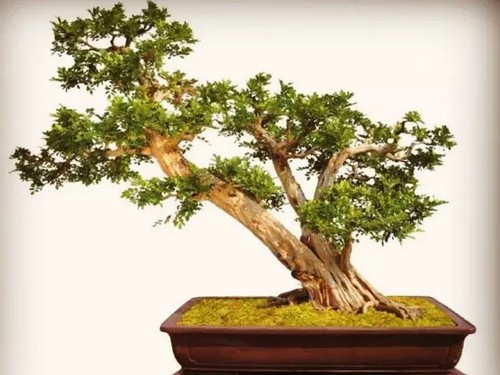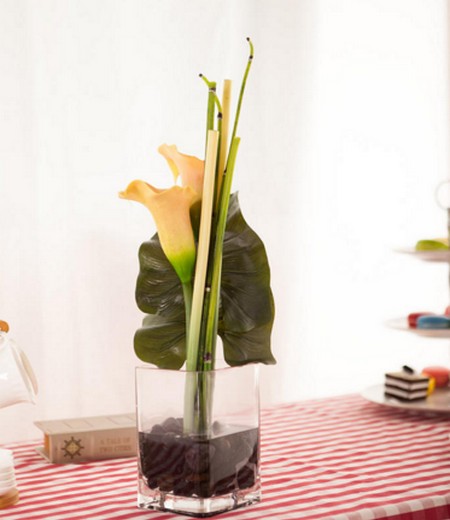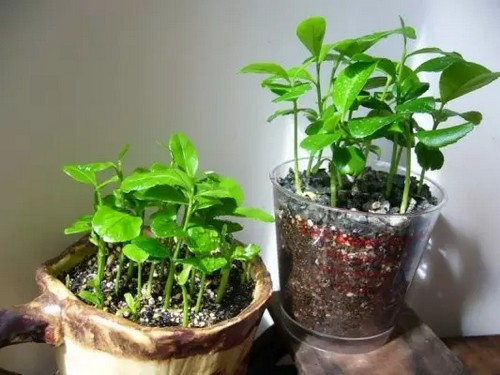Cultivation techniques of Jiuli incense bonsai
Jiuli incense trees are graceful, the branches are vigorous and powerful, the four seasons are evergreen, the flowers are white and have a strong aroma, it is an excellent bonsai material. Jiuli incense bonsai is elegant in posture and can be enjoyed all the year round. Jiuli incense can not only be planted in South China, but also suitable for pot planting, and it is also a good material for making bonsai. In the Yangtze River basin and its north, it can only be planted in pots to survive the winter. It does not choose much soil, so it grows best in deep, fertile and loose neutral sandy loam.

Rutaceae is a shrub or small tree of the genus Rutaceae, which is native to the subtropics and distributed in South and Southwest China. It is evergreen all the year round and has a straight tree shape. Leaves alternate, odd feather leaves, there are 3 to 9 leaves, leaf shape changes greatly, ovate, spatulate Obovate to prismatic, entire, dark green and glossy. Corymbose, terminal, lateral or axillary leaves of upper branches, with several flowers, white, extremely fragrant, flowering from May to August, bearing ovoid or globose fruit after anthesis, mature in winter, red.
Jiuli incense can not only be planted in South China, but also suitable for pot planting, and it is also a good material for making bonsai. In the Yangtze River basin and its north, it can only be planted in pots to survive the winter. It does not choose much soil, so it grows best in deep, fertile and loose neutral sandy loam. Pot planting selection basin should be slightly deeper, better air permeability, such as planting with plastic cylinder basin, it is appropriate to pad a layer of hard plastic foam at the bottom of the basin to enhance air permeability and drainage. Turn the basin and change the soil once a year before and after the Qingming Festival, and cut off the dead branches, disease and insect branches, only grow branches, shrink too long branches, and thinly cut too dense branches.
Jiuli incense is a positive tree species and should be placed in a place with plenty of sunshine and ventilation (direct light can be seen for at least five or six hours a day) in order to have luxuriant leaves and fragrant flowers. When flowering can be moved to the windowsill, full of fragrance, flowers still need to be placed in a place with sufficient sunshine, the growth in the semi-shaded place is not as strong as the sunny place, the fragrance of the flowers is also light, the branches are too shady, the leaves are light, and there are few or no flowers. Winter entry should also be kept in a sunny place.
Jiuli incense likes to be warm, and the most suitable temperature for growth is 20 ℃ to 32 ℃. It is not resistant to cold. In winter, when the lowest temperature drops to about 5 ℃, it moves into the room with low temperature (5 ℃ to 10 ℃) to overwinter, which is not conducive to the exercise of cold tolerance. If the room temperature is too low, it is easy to lose leaves and affect the growth of the following year. If the temperature is less than 0 ℃, the plant may freeze to death, but if the room temperature is too high, the plant can not dormant well, or even sprout indoors. When it comes out of the room, the cold wind blows, the bud retracts, and the new bud emerges again, which affects the growth of the same year.
The cultivation of Jiuli incense should be watered moderately, properly control water before budding, promote flower bud differentiation, after budding and flower and fruit stage, it is better to be slightly moist and not waterlogged on the pot. Jiuli incense likes fertilizer, and when going up or turning the basin to change soil, it is appropriate to mix some bone powder or nitrogen, phosphorus and potassium compound fertilizer in the culture soil, and apply nitrogen, phosphorus and potassium compound fertilizer once in half a month, not only nitrogen fertilizer, otherwise the branches and leaves will grow without pregnant buds, and in order to promote flower bud differentiation from April to June, 0.2% potassium dihydrogen phosphate solution can be sprayed to the leaves once a month, and the remaining roots can be drenched.
The family potted plant Jiuli incense has few seeds, and it is generally propagated by high-pressure method. In May and June, strong branches are selected, bark is cut with a sharp knife, moss and rotten leaf soil are mixed as moisturizing soil, and wrapped with plastic film. Often spray water to moisturize, the wound heals and grow new roots in about 2 months, cut off the film in September and October, do not scatter the wrapped moss rotten leaf soil and plant in the basin, move into the indoor maintenance in late October. The next spring Qingming Festival out of the room, according to conventional maintenance, 2 to 3 years can blossom. In addition, the split method can also be used to cut the tillering seed plants with roots from the roots of the old plants with a sharp knife in spring and plant them in a pot for 10 to 15 days, and then move to the sunny place for maintenance.
Time: 2019-05-25 Click:
- Prev

Cultivation techniques of bonsai cut flowers of calla lotus
Although colored calla lilies are often used for cut flowers because of their beautiful flowers, potted colored calla lilies also attract a large number of people. Colorful calla lilies have white, yellow, pink, orange, green, purple and other colors, rich in colors, in the flower market, its sales have been optimistic. And in recent years,
- Next

Pot planting technique of Lemon
I think there should be a small potted plant next to every office worker's desk, whether you are anti-radiation or edifying your sentiment, it will always bring people a different mood. But most potted plants don't seem to have anything new except cactus and green pineapple. In fact, many fruit kernels can be turned into interesting potted plants.
Related
- Fuxing push coffee new agricultural production and marketing class: lack of small-scale processing plants
- Jujube rice field leisure farm deep ploughing Yilan for five years to create a space for organic food and play
- Nongyu Farm-A trial of organic papaya for brave women with advanced technology
- Four points for attention in the prevention and control of diseases and insect pests of edible fungi
- How to add nutrient solution to Edible Fungi
- Is there any good way to control edible fungus mites?
- Open Inoculation Technology of Edible Fungi
- Is there any clever way to use fertilizer for edible fungus in winter?
- What agents are used to kill the pathogens of edible fungi in the mushroom shed?
- Rapid drying of Edible Fungi

